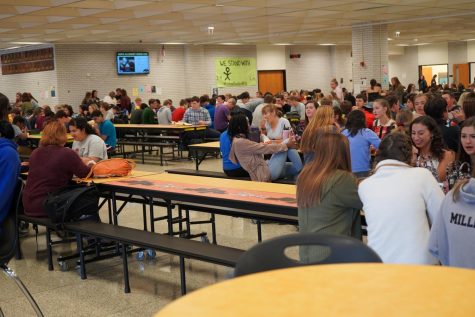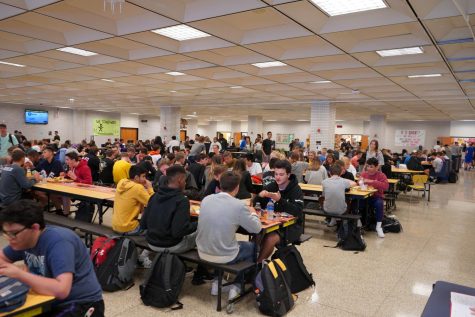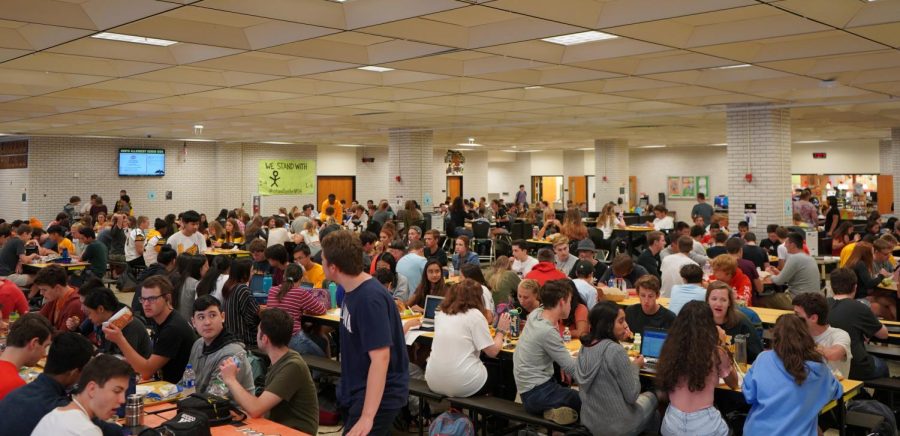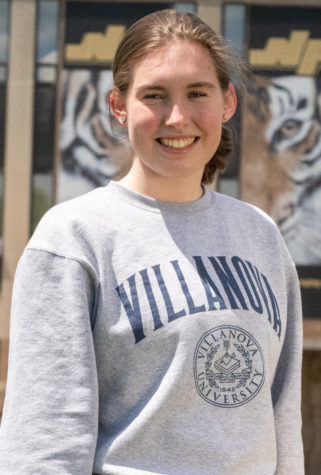Cafeteria Chaos
Students in 7th period lunch have to contend with the crowd
The 7th period lunch is now up to 525 students, by far the busiest lunch period of the three.
September 12, 2019
Admit it — the first thing you thought about when you received your schedule late last summer was whether any of your friends would be in your lunch period. But what you probably didn’t expect was getting to lunch that first day and realizing it was harder to find a seat than a friend.
Yet, for the many hundreds of students scheduled for a 7th period lunch, this was, and continues to be, the the lunchtime predicament.
“One day I even noticed some kids standing around a table since there were not enough chairs,” said junior Ali Morrison, who eats lunch 7th.

photo by Abby Pingpank
NASH Principal Dr. Kreider is well aware that the 7th period lunch is more crowded than the other two lunch periods. Yet the scheduling process makes it difficult to balance the periods.
“Once students select their courses back in March, my next step is to design a master schedule that is purely designed based on student needs,” Kreider said. “Lunch numbers this year in July were between 400-450 in each lunch period, but once students get their schedules, it has been 4-5 months since they have picked their classes, and they have legitimate concerns about how their selections align with their career goals.”
As many NASH students have experienced, when there is not enough room in a class that they want to take, the easiest way to fix the issue is to have their counselor move their lunch so that they can remain in the desired course. The counselors do so by first gaining the approval of the Main Office.
“When we go to make changes, that is where I am a little bit more flexible with class sizes,” Kreider said. “We generally put a seat cap in the cafeteria at 500, but if it helps with getting a student a course that they want, need, or will find beneficial to their future, I will go over the cap.”
But the scene in the cafeteria during 7th period is especially jammed with students this year.
“When I finally sit down to eat after coming from a class on the third floor, lunch is pretty much over,” junior Raina Dodson said. “It is hard to even sit with your friends because you can never find space for everyone.”
Katrina Evancho, also a junior, is experiencing the same problem. “In a lunch period this crowded, it can take more than ten minutes to buy food because of how long the lines are, leaving a measly twenty minutes to eat, socialize, and get our backpacks for our next classes,” she said.

photo by D. Crickets
Kreider acknowledged that the 7th period lunchroom has swelled with students.
“Period 7 probably went from 440 to 525, so we did pick up between anywhere from 60-85 seats in the cafeteria and more than the other two periods,” he said. “We can adjust it and place more tables in there and get the seating capacity higher, but the payoff and the pro is that kids get classes that they wanted.”
Kreider added that lunch scheduling ultimately comes down to educational priorities.
“I value student choice over cafeteria size, and it is still safe,” he said.












